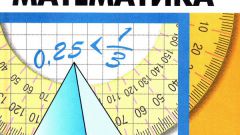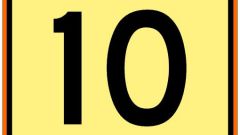Instruction
1
The method of singling out a complete square of binomials is based on the use of two formulas of the reduced multiplication of polynomials. These formulas are special cases of the Binomial theorem for the second degree and allow you to simplify the search expression so that it was possible to conduct further reduction or decomposition on the multipliers:
(m + n)2 = m2 + 2·m·n + n2;
(m - n)2 = m2 - 2·m·n + n2.
(m + n)2 = m2 + 2·m·n + n2;
(m - n)2 = m2 - 2·m·n + n2.
2
According to this method from the original polynomial is required to allocate the squares of the two monomials and the sum/difference of their double works. The application of this method makes sense if the high-degree terms not less than 2. Suppose the task is to factorize a lowering of the degree the following expression:
4·y^4 + z^4
4·y^4 + z^4
3
To solve the problem you need to use the method of allocation of the full square. Thus, the term consists of two variables with monomials of even degree. Therefore, it is possible to identify each of them using m and n:
m = 2·y2; n = z2.
m = 2·y2; n = z2.
4
Now we need to give initial expression to the form (m + n)2. It already contains the squares of these terms, but not enough double work. You need to add it artificially, and then subtract:
(2·y2)2 + 2·2·y2·z2 + (z2)2 - 2·2·y2 ·z2 = (2·y2 + z2)2 – 4·y2·z2.
(2·y2)2 + 2·2·y2·z2 + (z2)2 - 2·2·y2 ·z2 = (2·y2 + z2)2 – 4·y2·z2.
5
In the resulting expression, you can see the formula difference of squares:
(2·y2 + z2)2 – (2·y·z)2 = (2·y2 + z2 – 2·y·z)· (2·y2 + z2 + 2·y·z).
(2·y2 + z2)2 – (2·y·z)2 = (2·y2 + z2 – 2·y·z)· (2·y2 + z2 + 2·y·z).
6
So, the method consists of two stages: allocation of the monomials of a complete square of m and n, the addition and subtraction of their double works. Selection method full square binomials can be used not only independently but also in combination with other methods: making the brackets common factor, change of variable, grouping terms, etc.
7
Example 2.
Select the full square in the expression:
4·y2 + 2·y·z + z2.
Solution.
4·y2 + 2·y·z + z2 =[m = 2·y, n = z] = (2·y)2 + 2·2·y·z + (z) 2 – 2·y·z = (2·y + z)2 – 2·y·z.
Select the full square in the expression:
4·y2 + 2·y·z + z2.
Solution.
4·y2 + 2·y·z + z2 =[m = 2·y, n = z] = (2·y)2 + 2·2·y·z + (z) 2 – 2·y·z = (2·y + z)2 – 2·y·z.
8
The method used for finding roots of a quadratic equation. The left part of the equation is a trinomial of the form a·y2 + b·y + c, where a, b and c are numbers and a ≠ 0.
a·y2 + b·y + c = a·(y2 + (b/a)·y) + c = a·(y2 + 2·(b/(2·a))·y) + c = a·(y2 + 2·(b/(2·a))·y + b2/(4·a2)) + c – b2/(4·a) = a·(y + b/(2·a)) 2 – (b2 – 4·a·c)/(4·a).
a·y2 + b·y + c = a·(y2 + (b/a)·y) + c = a·(y2 + 2·(b/(2·a))·y) + c = a·(y2 + 2·(b/(2·a))·y + b2/(4·a2)) + c – b2/(4·a) = a·(y + b/(2·a)) 2 – (b2 – 4·a·c)/(4·a).
9
These calculations lead to the notion of discriminant which is equal to (b2 – 4·a·c)/(4·a) and the roots of the equation are equal:
y_1,2 = ±(b/(2•a)) ± √ ((b2 – 4·a·c)/(4·a)).
y_1,2 = ±(b/(2•a)) ± √ ((b2 – 4·a·c)/(4·a)).






